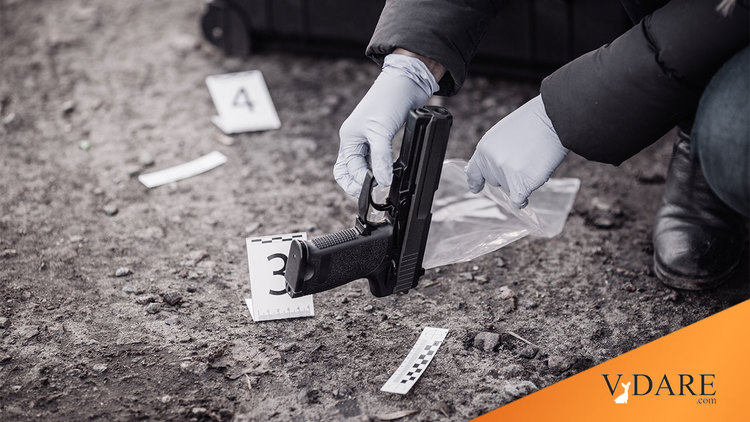
In 1960 USA (90% White), Police Cleared 80 Percent Of Homicides Nationwide; In 2022 USA (55% White), Police Clear Barely 50 Percent Of Homicides
By Paul Kersey
07/08/2022
CBS data on homicide clearance shows clearly: When America was 90 percent white in 1960s, eight of 10 murder cases were solved. Now, with America roughly 55 percent white, barely one in two are solved.
Correlation? To ask the question is to answer it.
Philadelphia Police Commissioner Says Disparity Of Arrests For Black, Hispanic Homicide Victims Is ‘Stunning,’ Philadelphia CBS, June 30, 2022
PHILADELPHIA (CBS) — In a new investigative series, “Crime Without Punishment: Unsolved Murder In America,” CBS News is taking a look at the disturbing rise of homicides. Today, there is about a 50-50 chance a killer will not be arrested.
The investigation, which brought Chief Investigative Correspondent Jim Axelrod to Philadelphia and to other cities around the country, also found a stunning gap in the arrest rate for cases with White victims versus Black or Latino victims.
Detectives from Philadelphia’s homicide unit, along with a SWAT team, are raiding a house where they believe a murder suspect is holed up.
But these detectives spend each day confronting a troubling question: Why do so many murders now go unsolved?
“For us, it’s the volume,” Murray said.
Five hundred sixty two homicides were committed in Philadelphia last year — that’s about 11 each week. More than half of those cases are still open.
“It’s the number of murders, and we just keep going and going and going,” Murray said. “It’s just the volume just comes in, and it just crushes you.”
In the 1960s, police solved eight out of every 10 murder cases in America. Now, it’s barely one in two.
“It has never been this bad,” Thomas Hargrove, of the Murder Accountability Project, said. “During the last seven months of 2020, most murders went unsolved, and that’s never happened before in America.”
What chiefs nationwide told us hinders murder investigations most: The breakdown between police and communities of color in a post-George Floyd world.
Our investigative data team analyzed unsolved murders across the country. The rate of arrests over the last 30 years when the victim is White has risen above 85%. Look how the rate declines below when the victim is Hispanic, and even fewer arrests are made when the victim is Black.
“It is stunning,” Philadelphia Police Commissioner Danielle Outlaw said. “It’s not just here. It’s not just here.”
Outlaw says police need the community’s help, but knows it must be earned.
Axelrod: Are Black murders pursued as aggressively?
Outlaw: Yes.
Axelrod: As urgently?
Outlaw: Yes.
Axelrod: With the same amount of manpower?
Outlaw: Yes, yes. Again, it’s across…
Axelrod: So then why do you end up with this kind of disparity?
Outlaw: I think it’s obvious. I’m a Black woman. What we need is a collaborative effort in solving these cases.
Axelrod: Sometimes it sounds like what’s implicit, is the community of color needs to trust the police more.
Outlaw: No, not at all. We’re talking about historical issues, systemic inequities, that contribute to the mistrust. It has to be a two-way street.
In a near homogeneous nation, trust is high between authority and the citizenry, with the latter having no interest in protecting those who break the law from justice.
In our fracturing, racially amalgamating 2022 America, the clearance rate on homicides falling below 50 percent has a strange parallel to the United States of America nearing a white minority and racial plurality.
But only one engaged in pattern recognition would dare notice this, right?
Siri: What are the consequences of America losing its white majority?
Asking for a friend.
